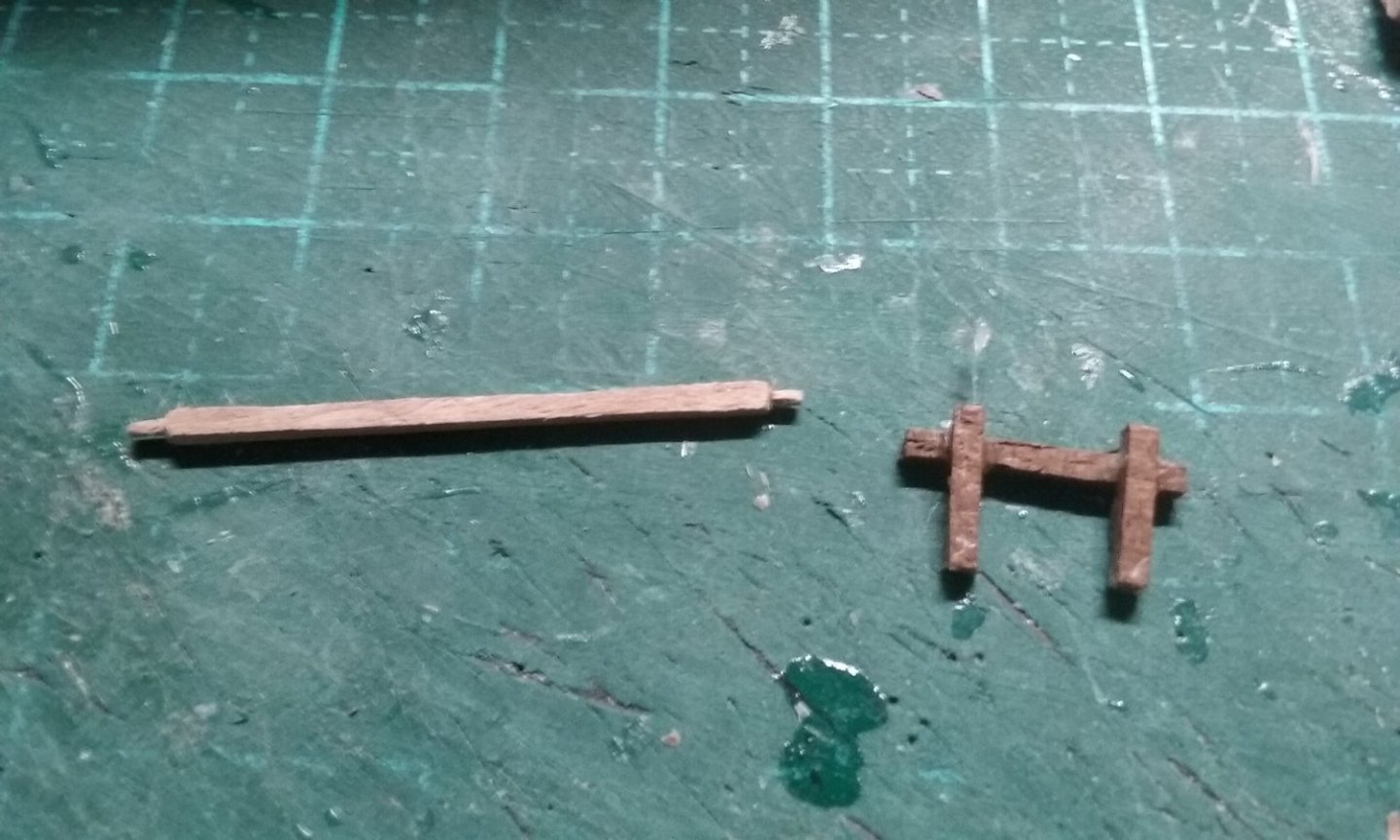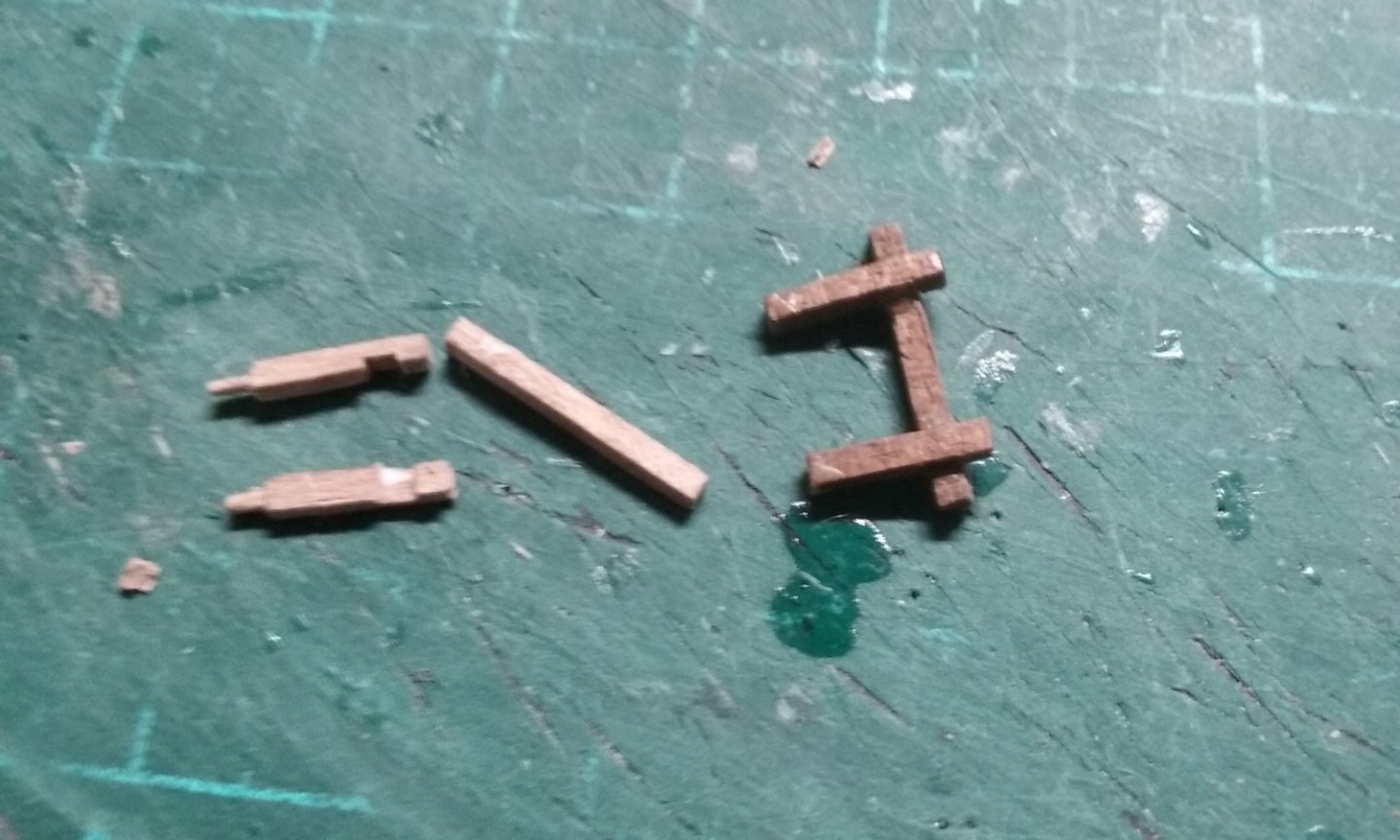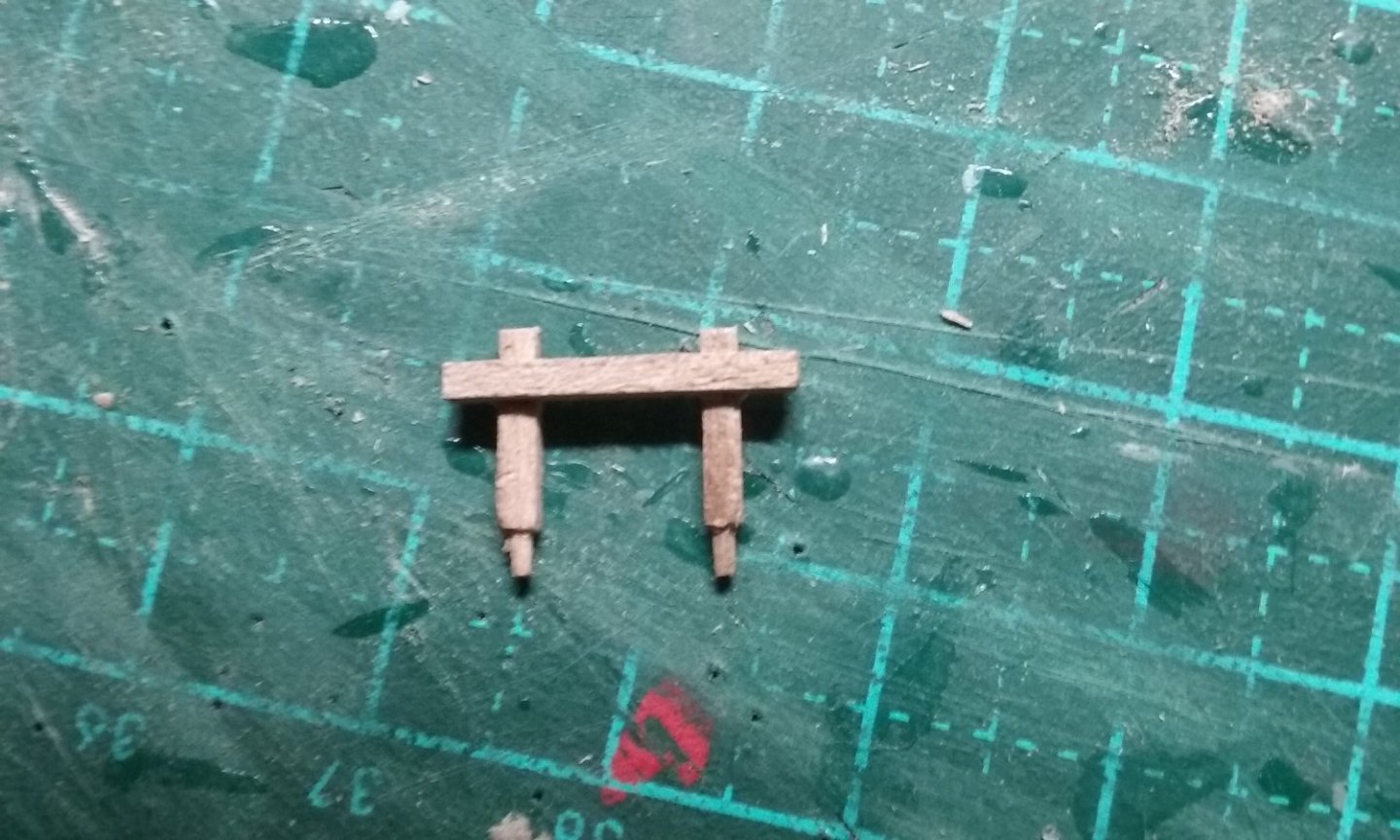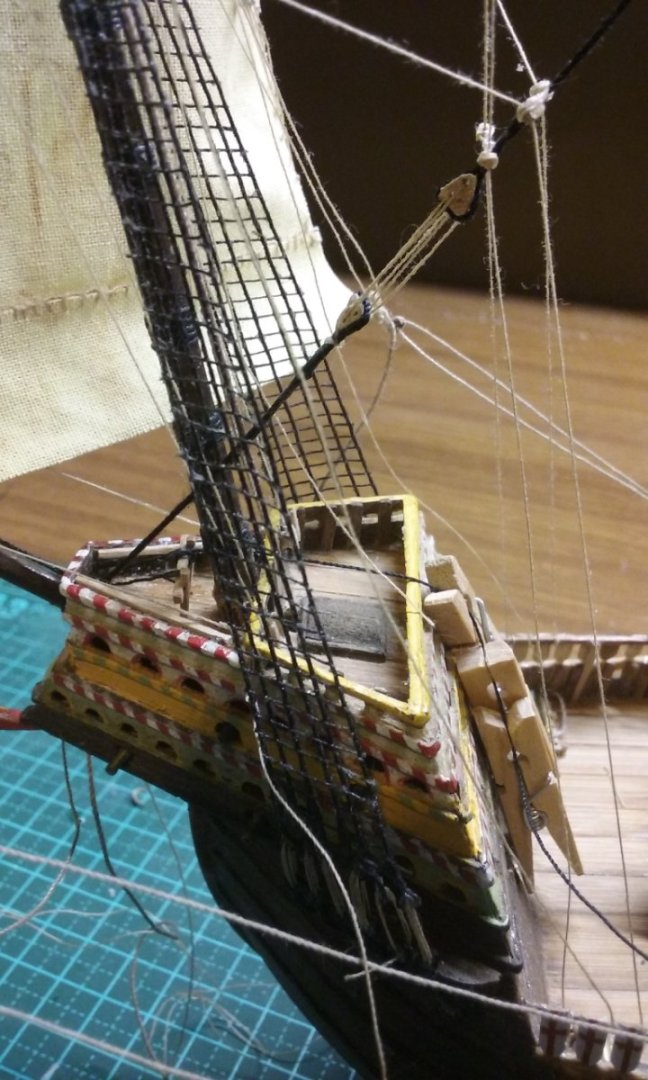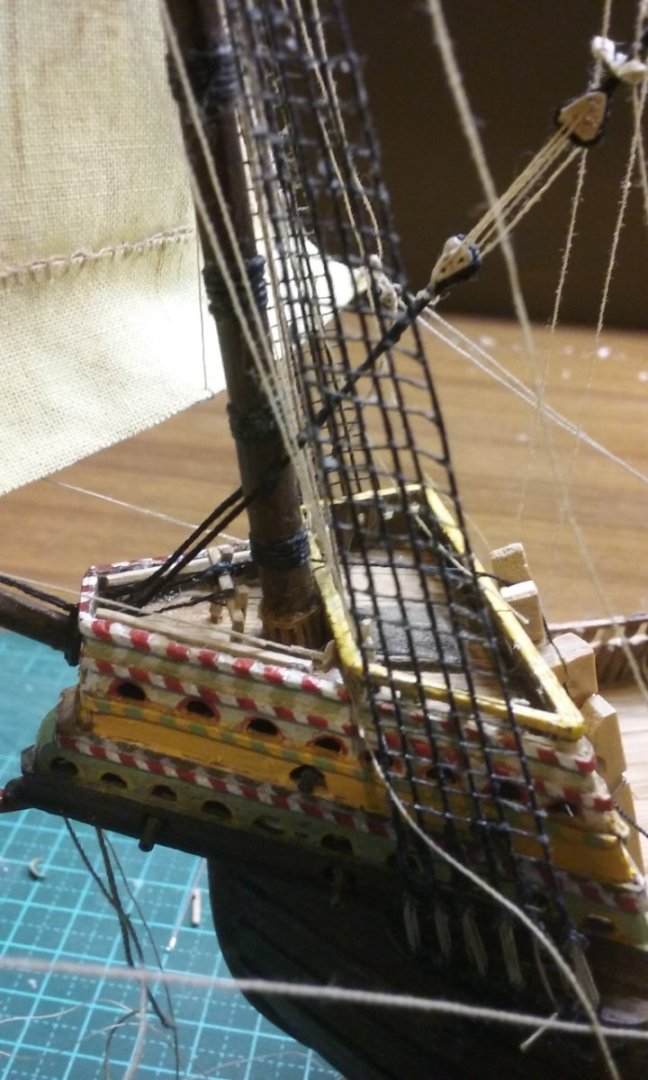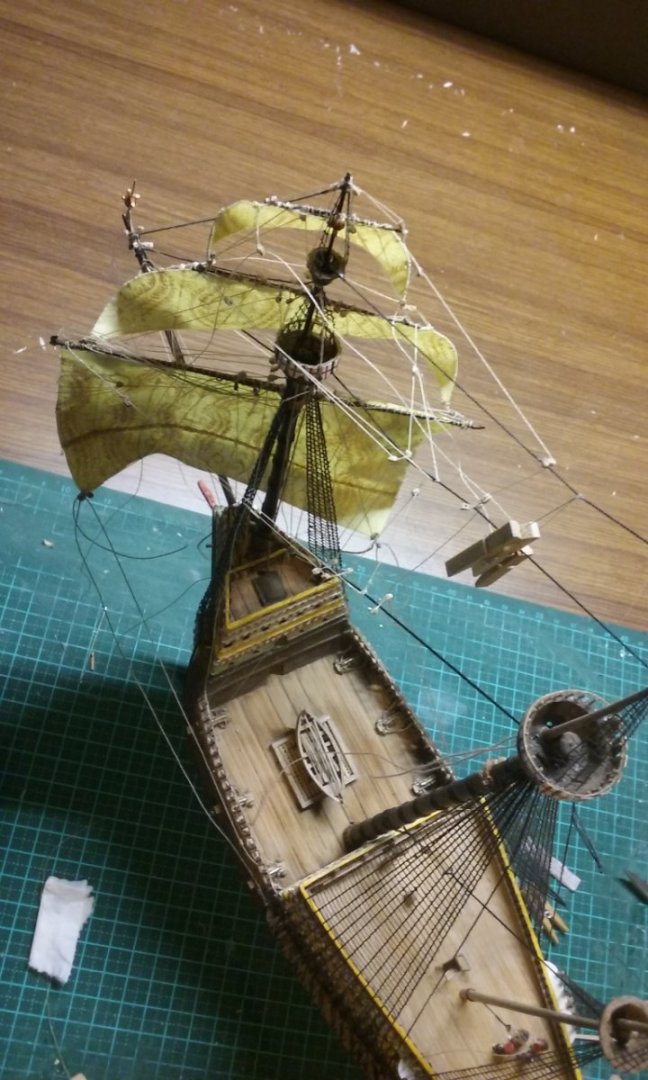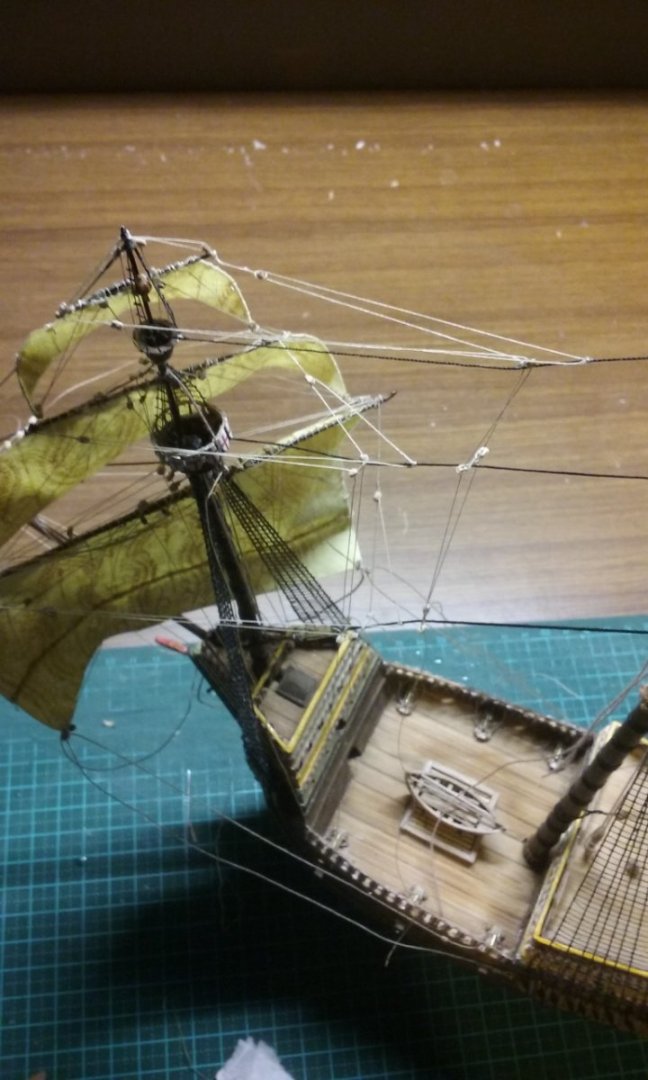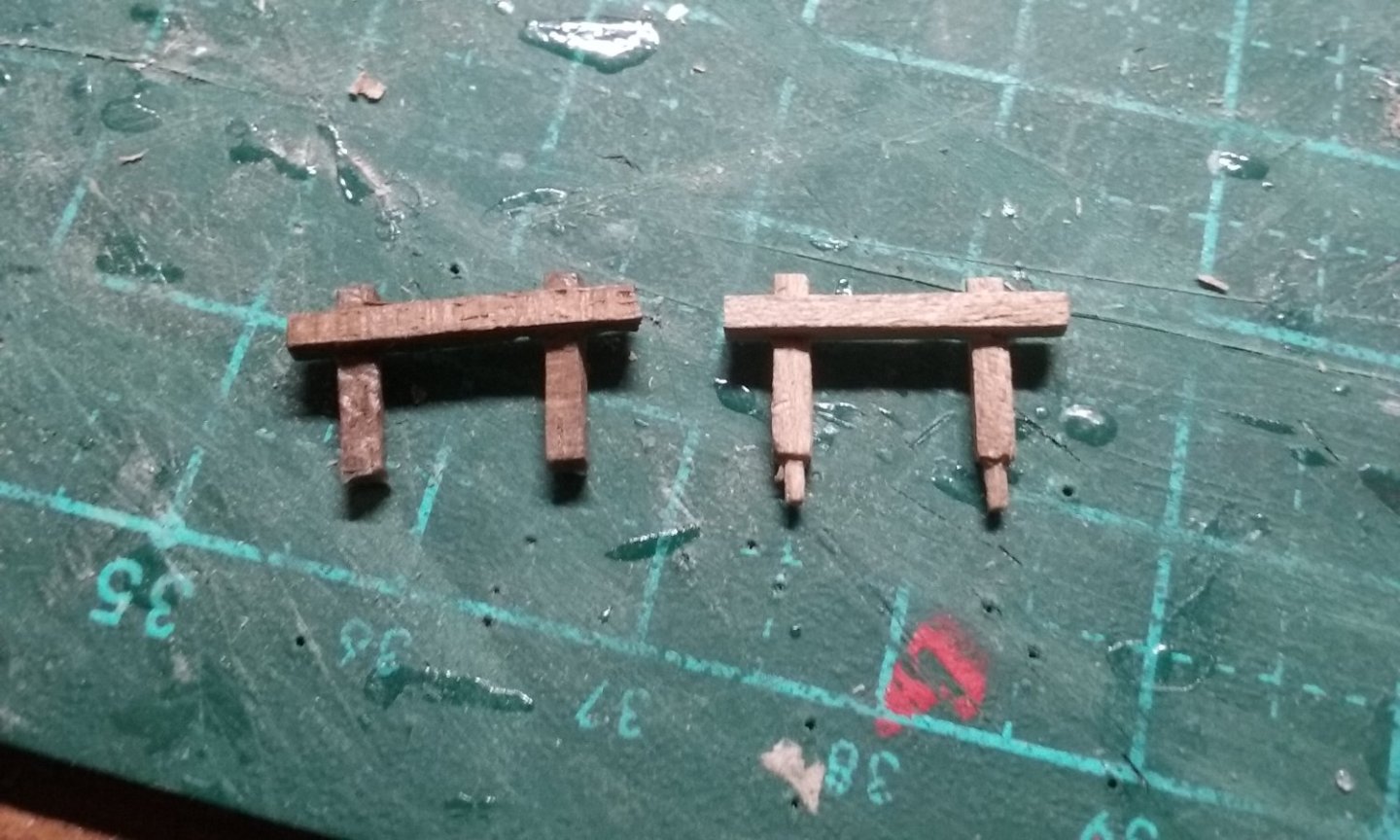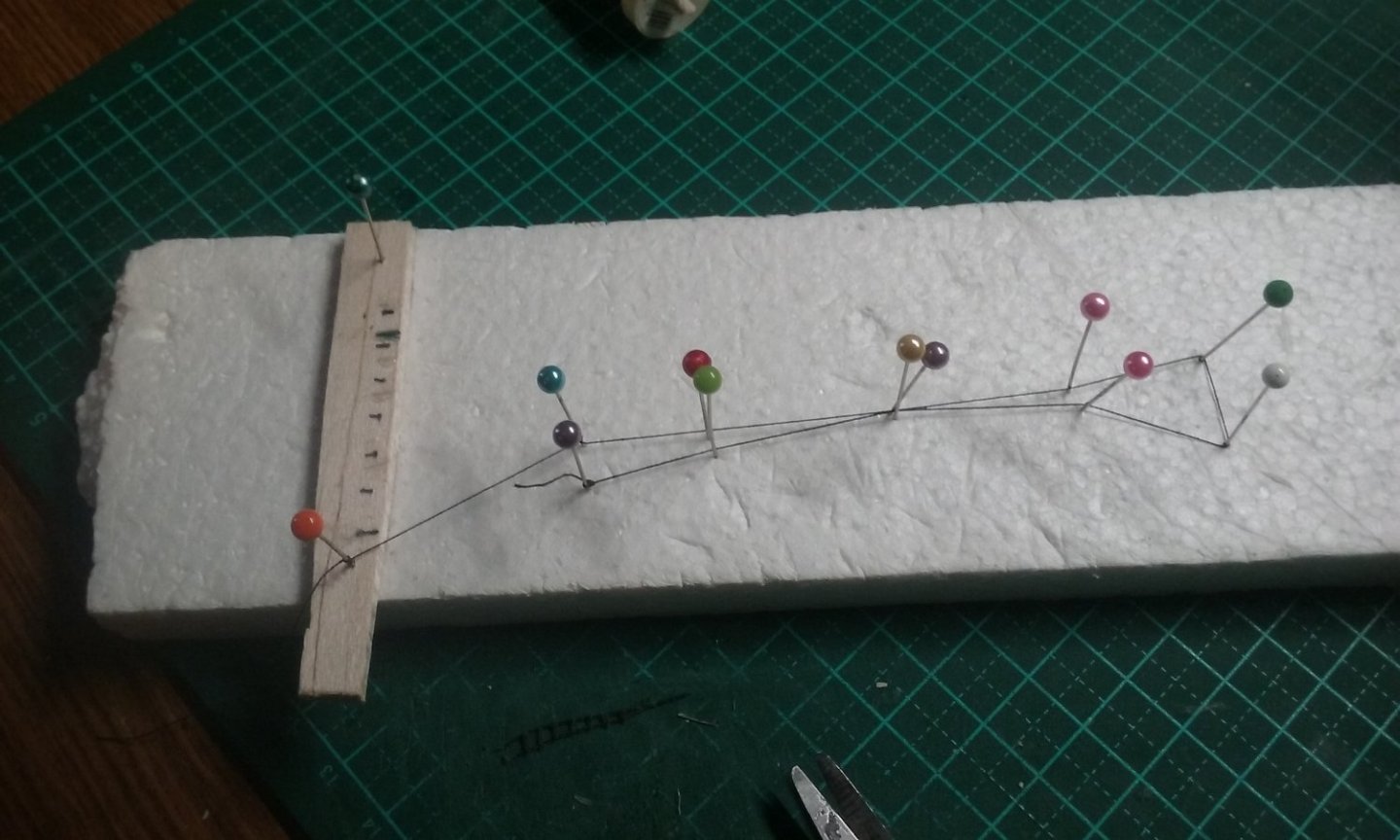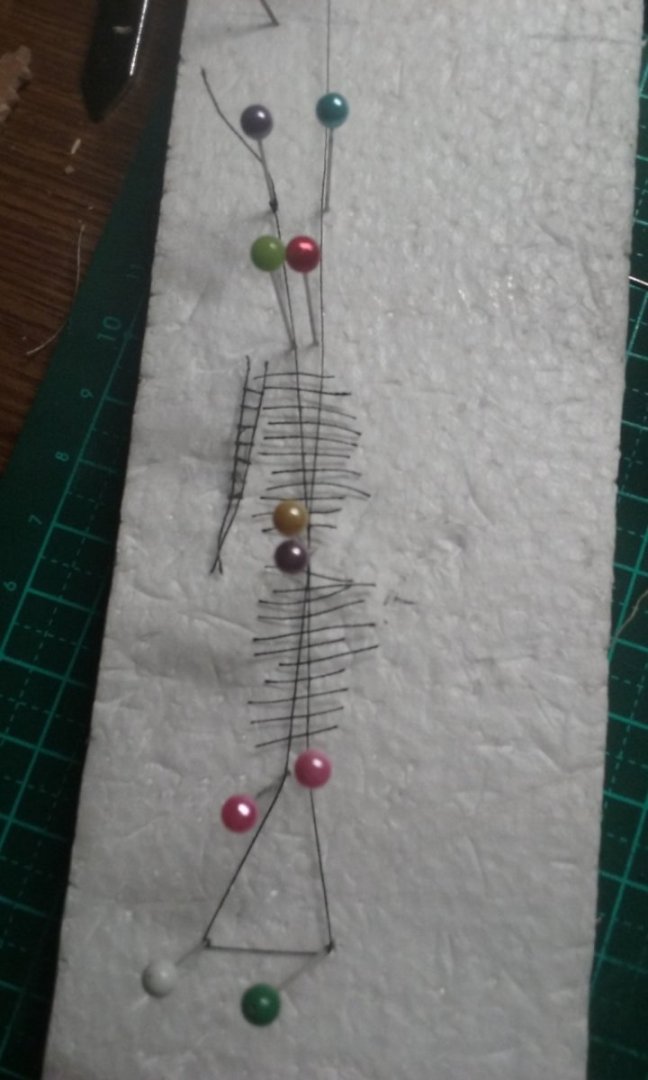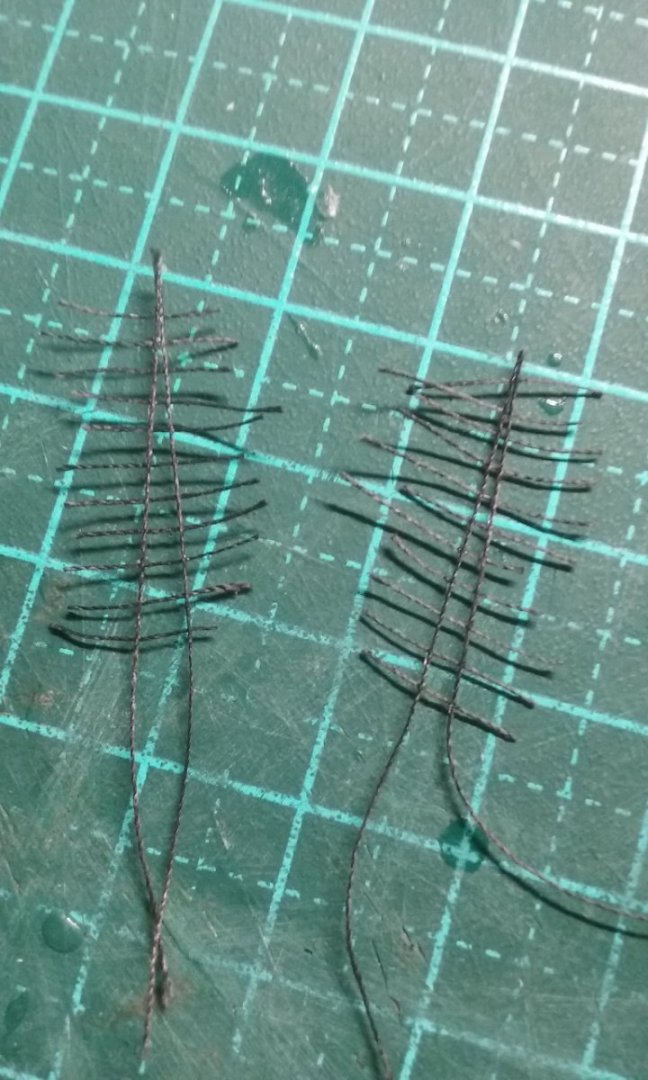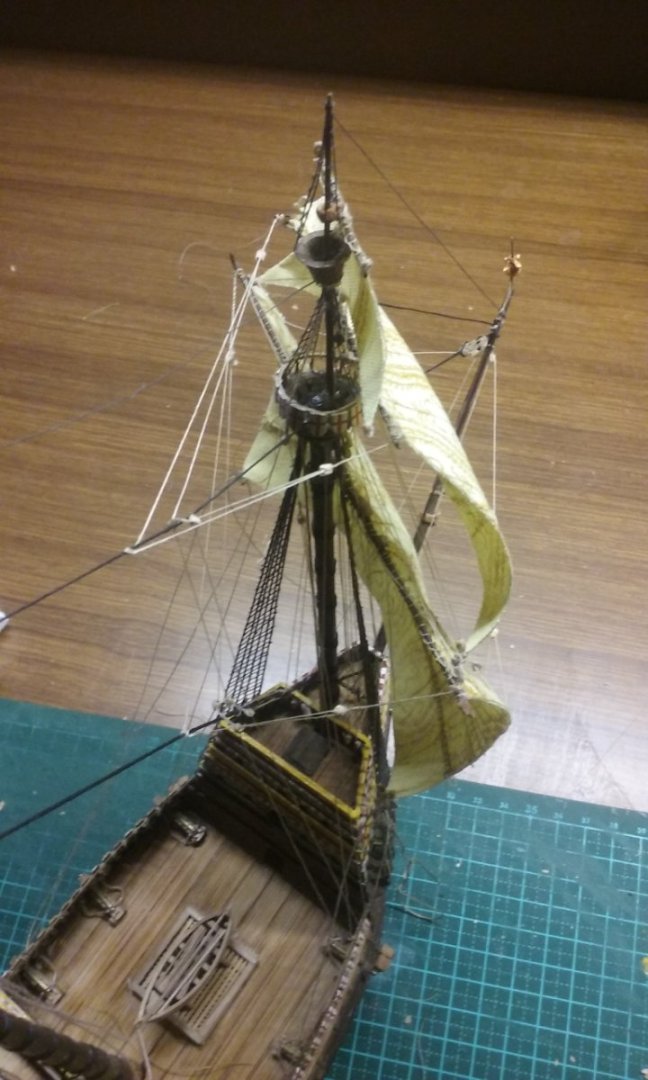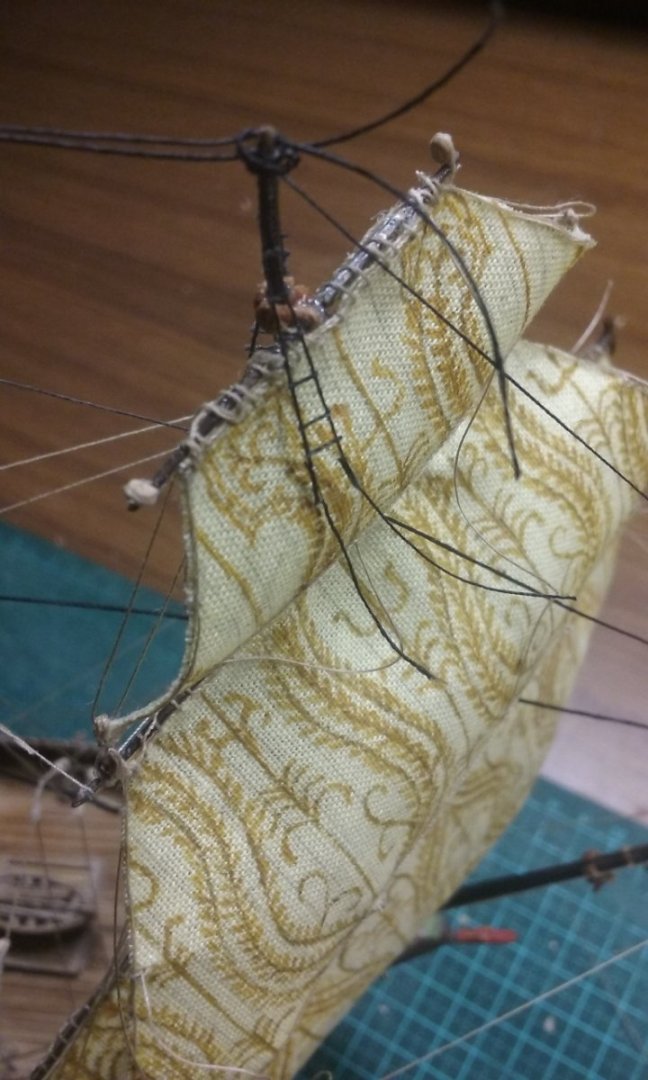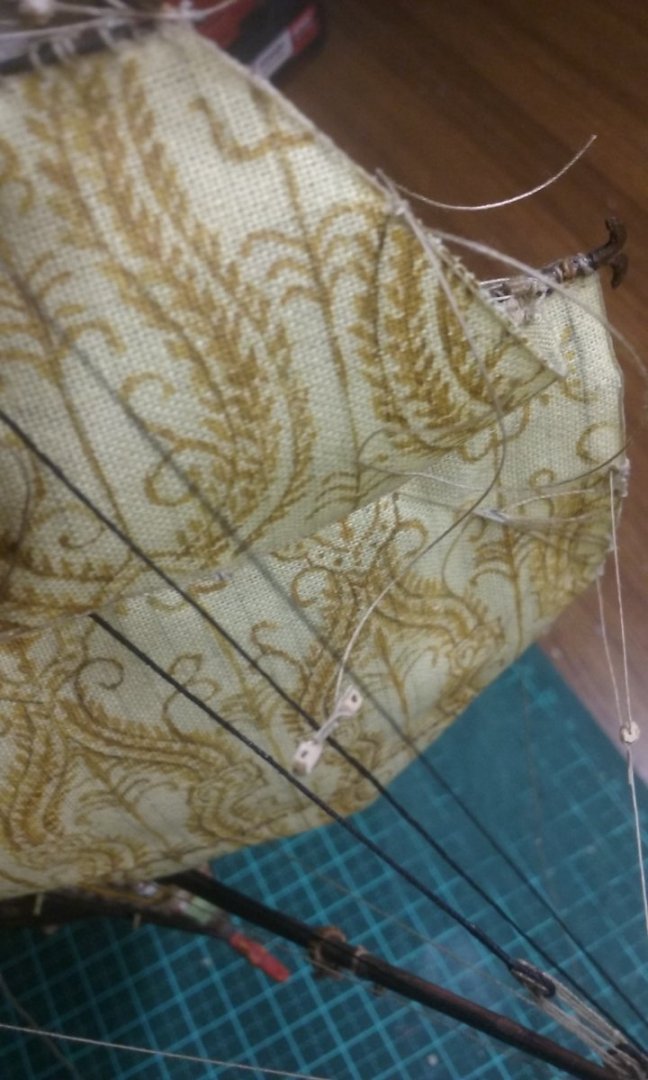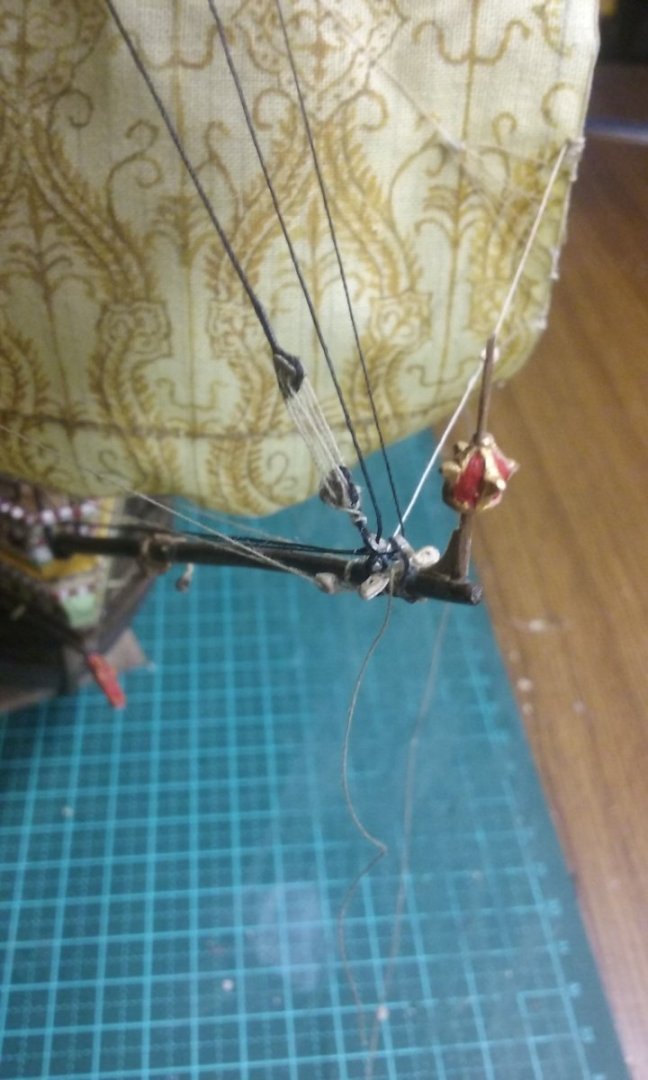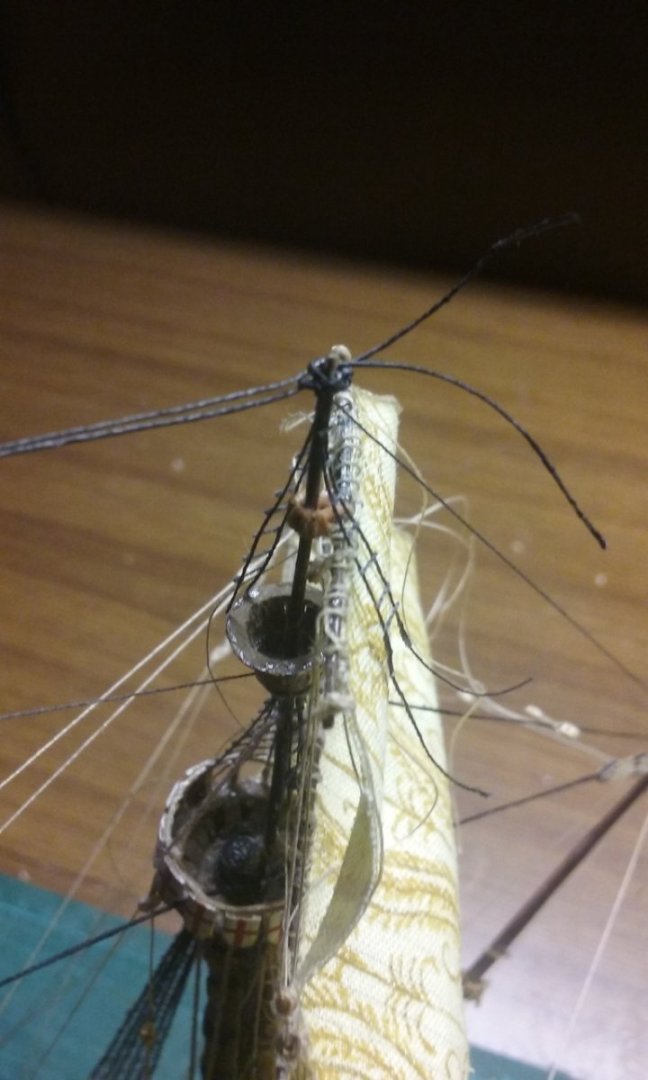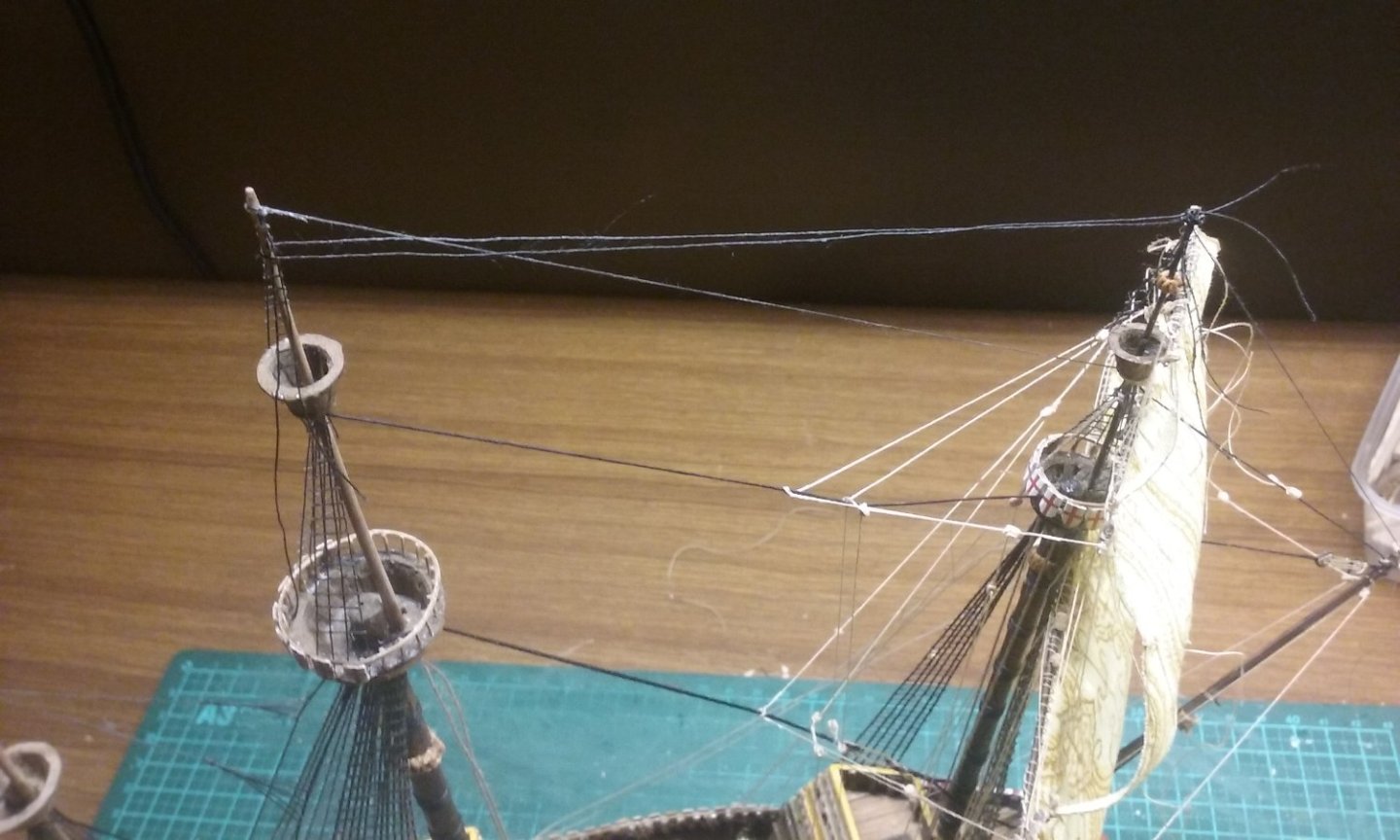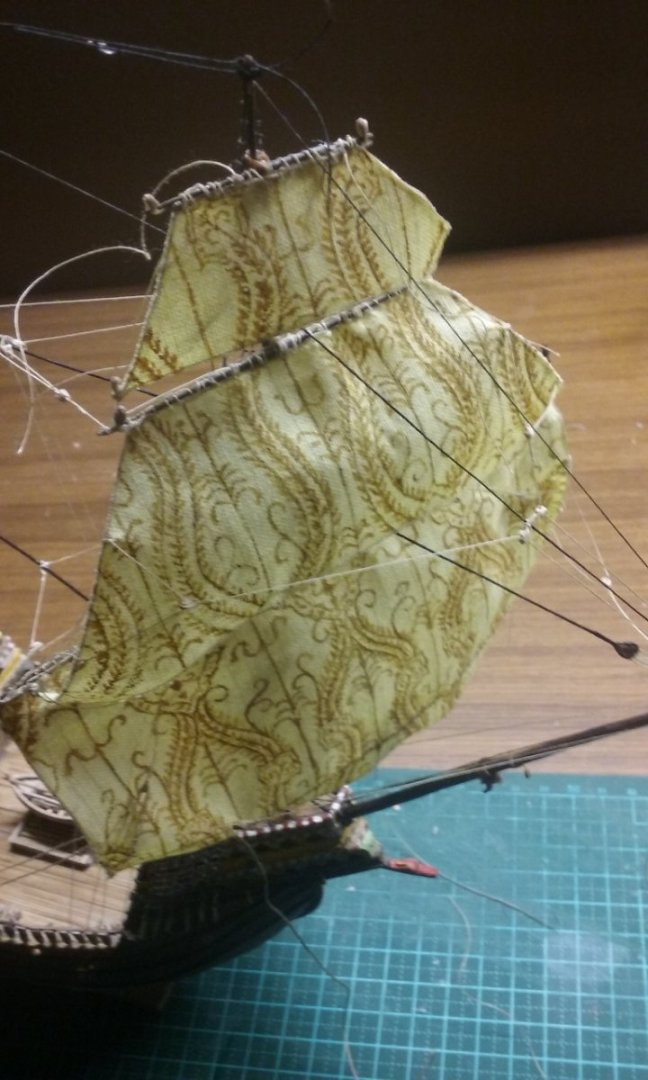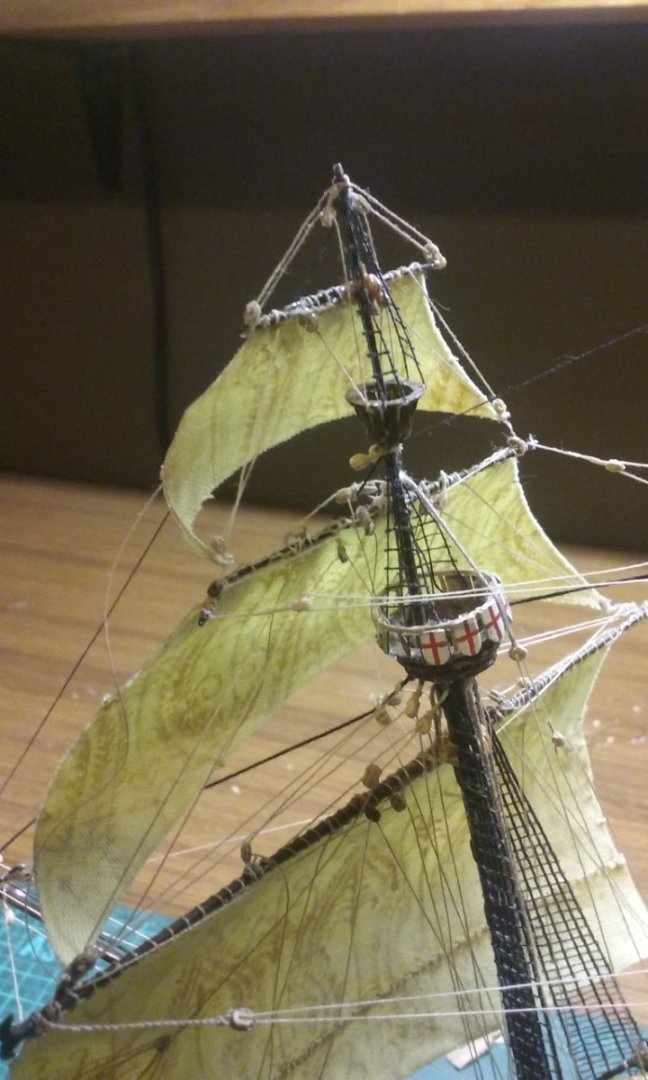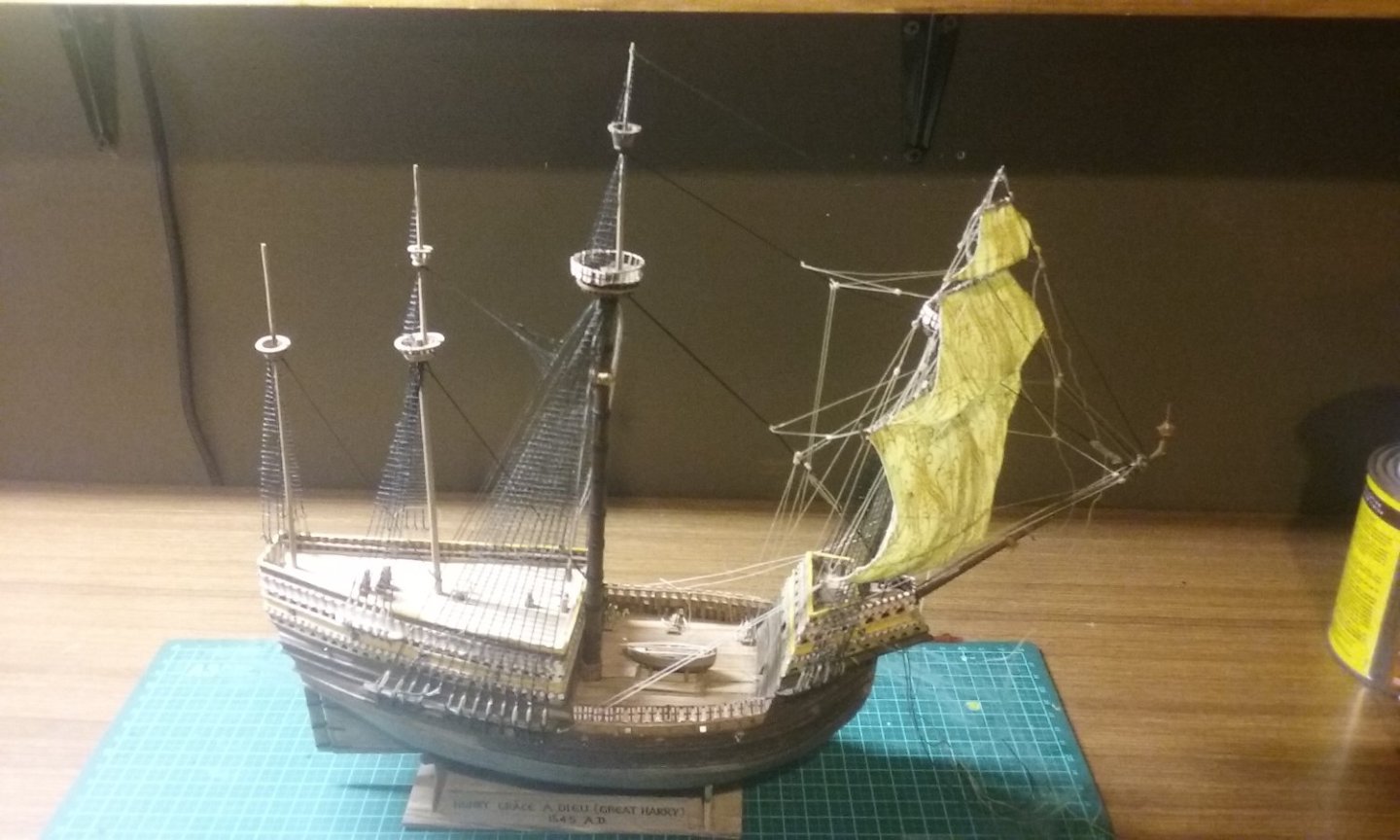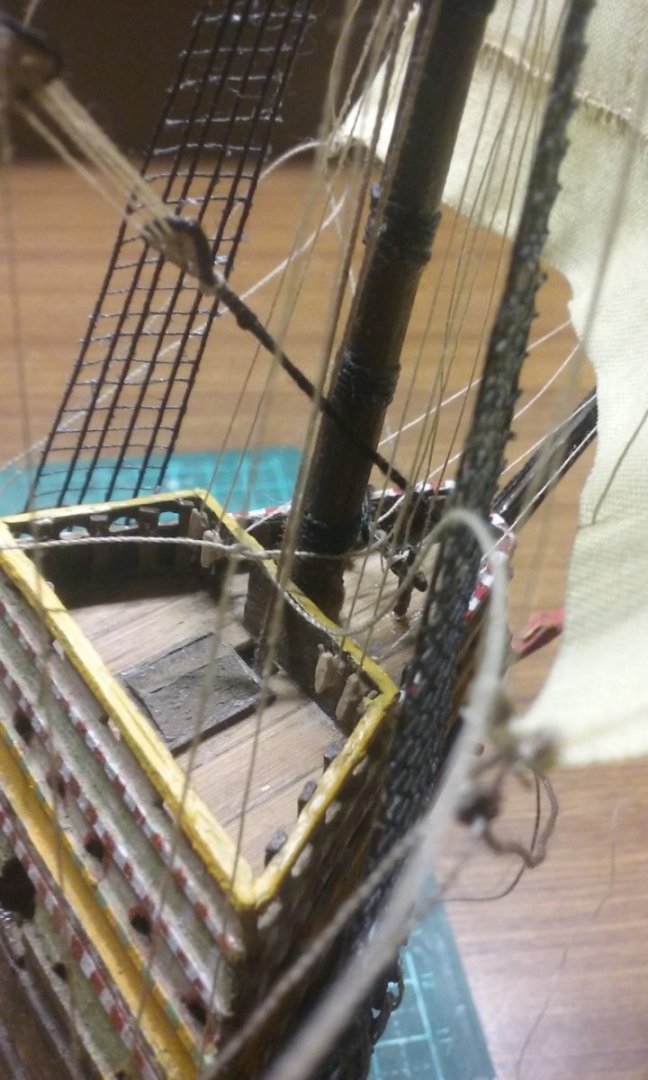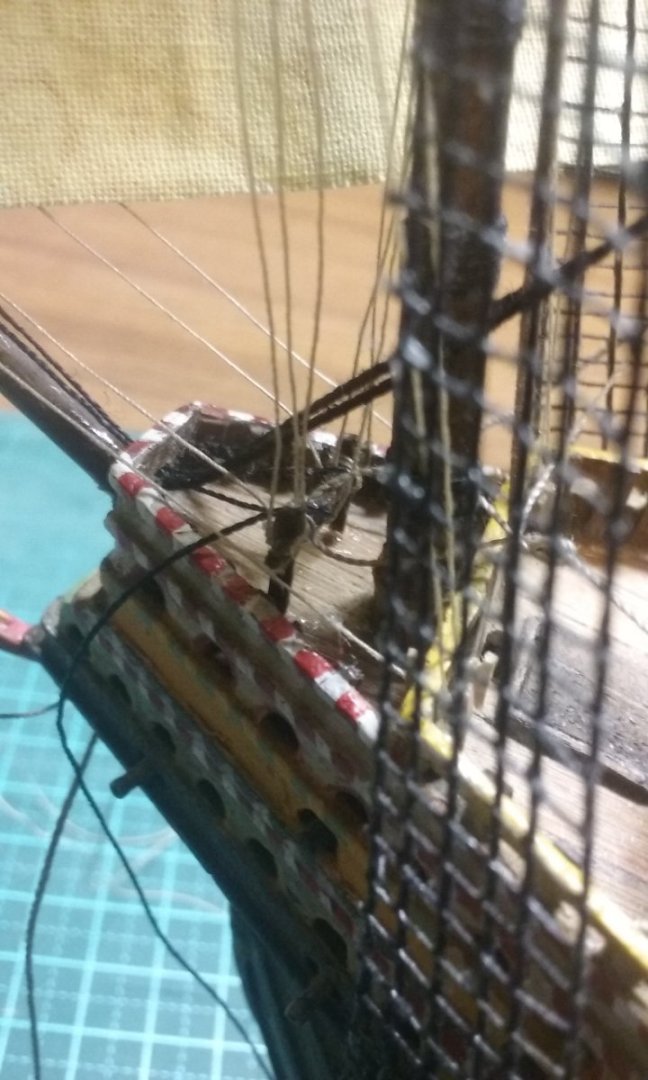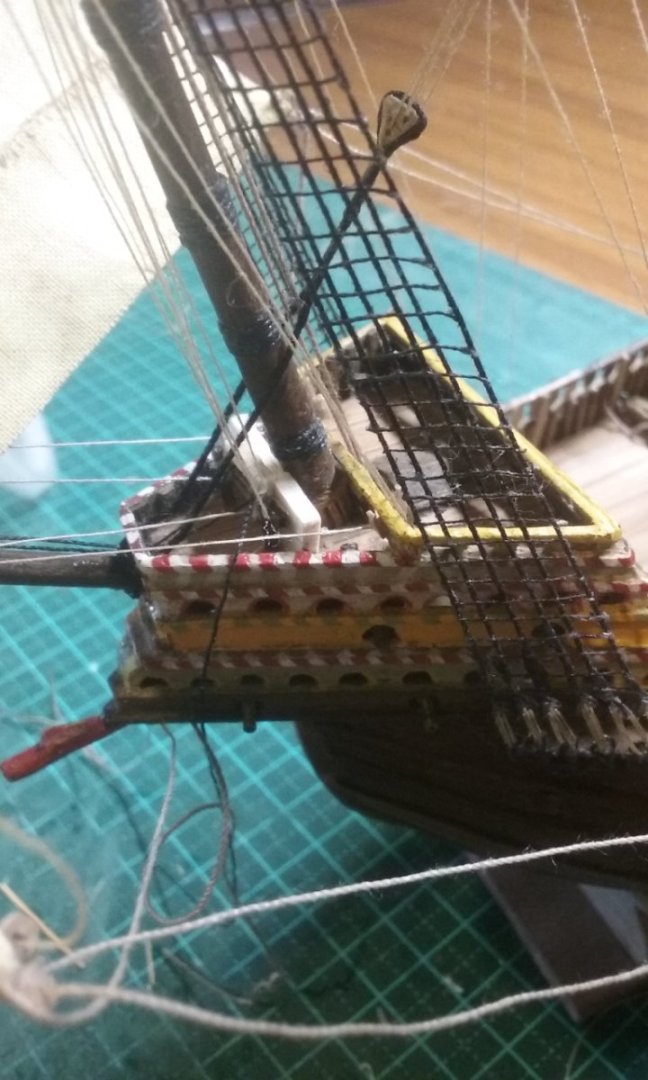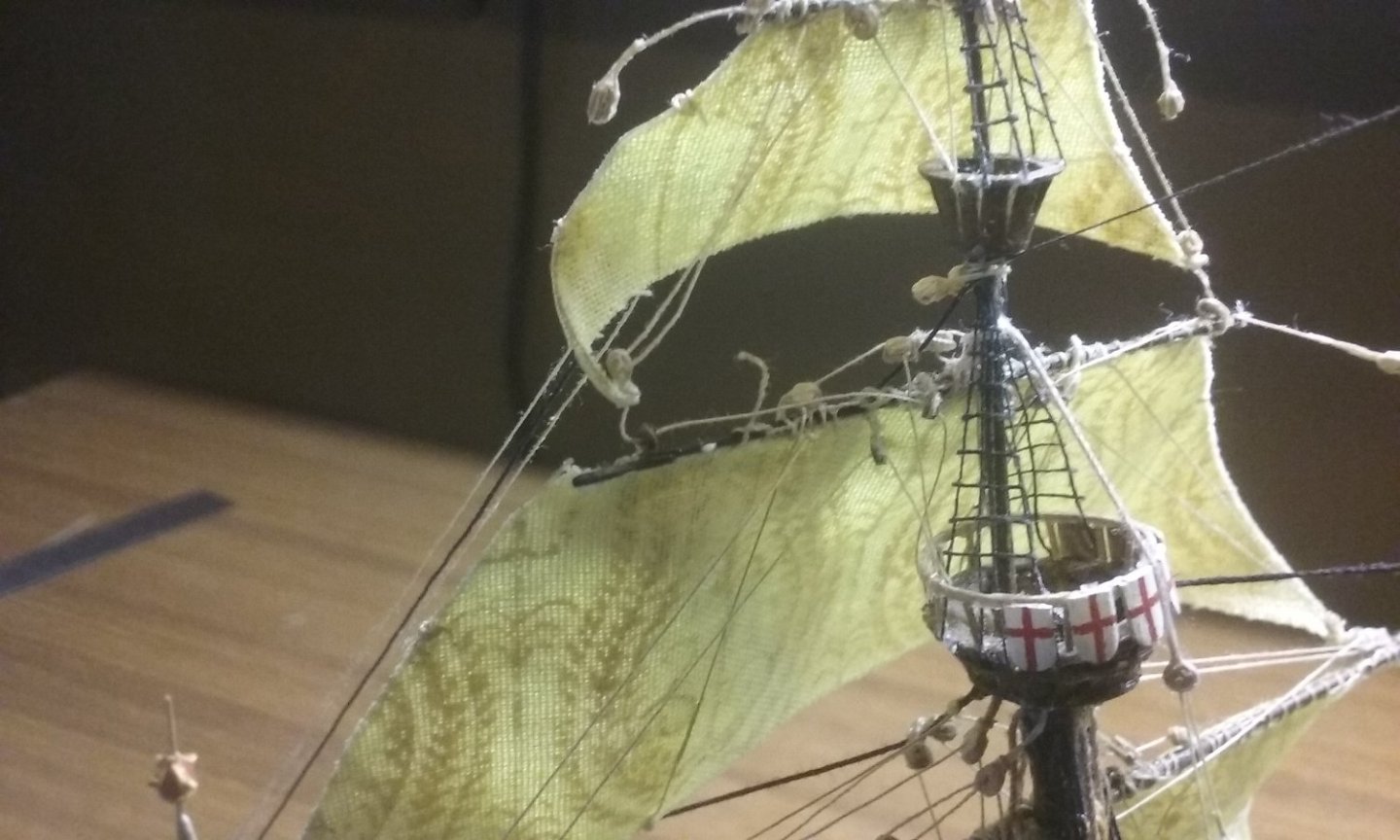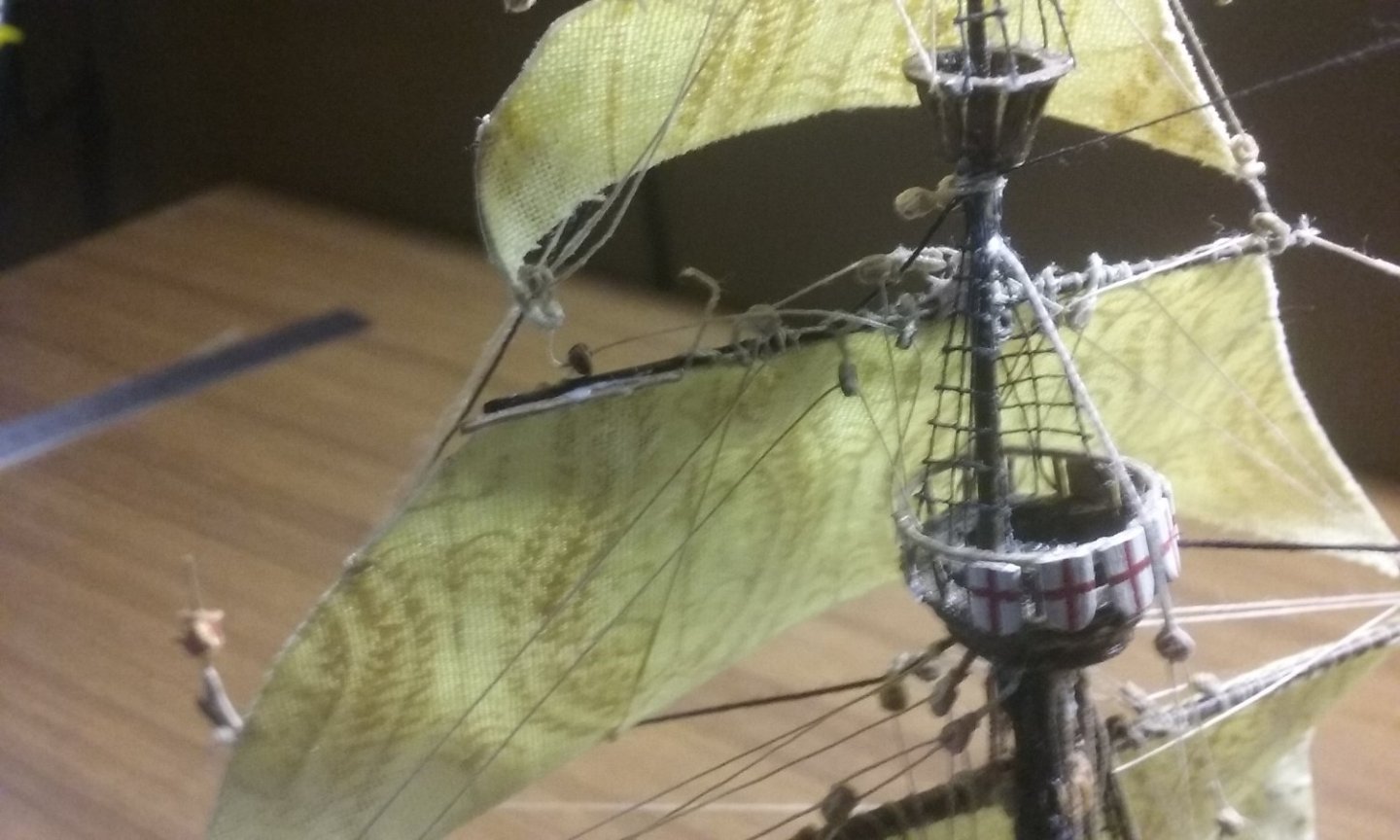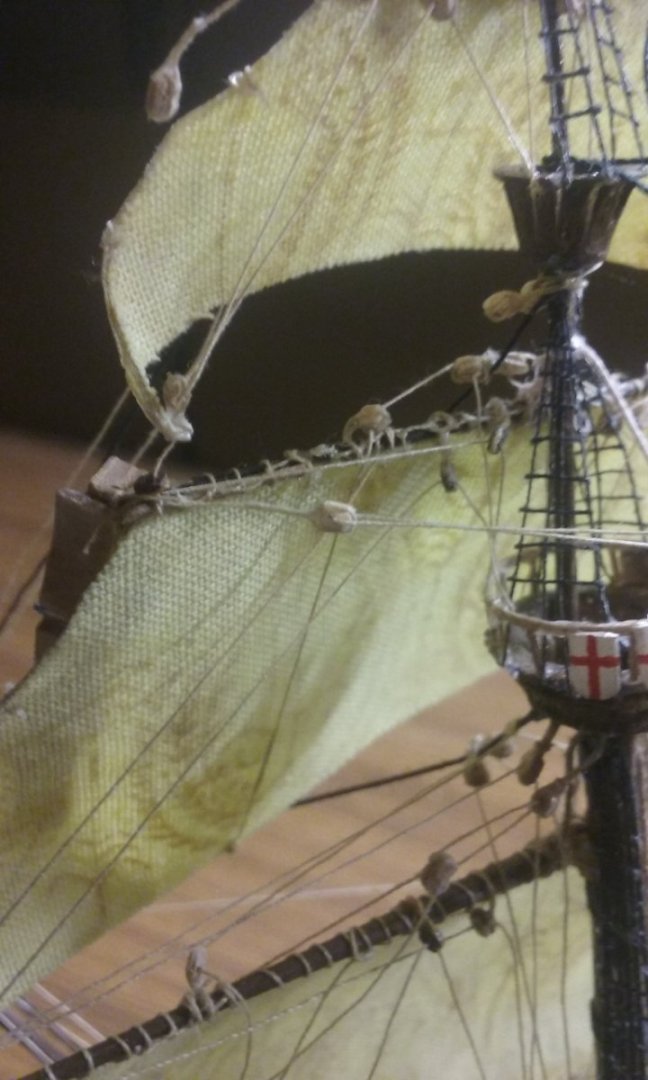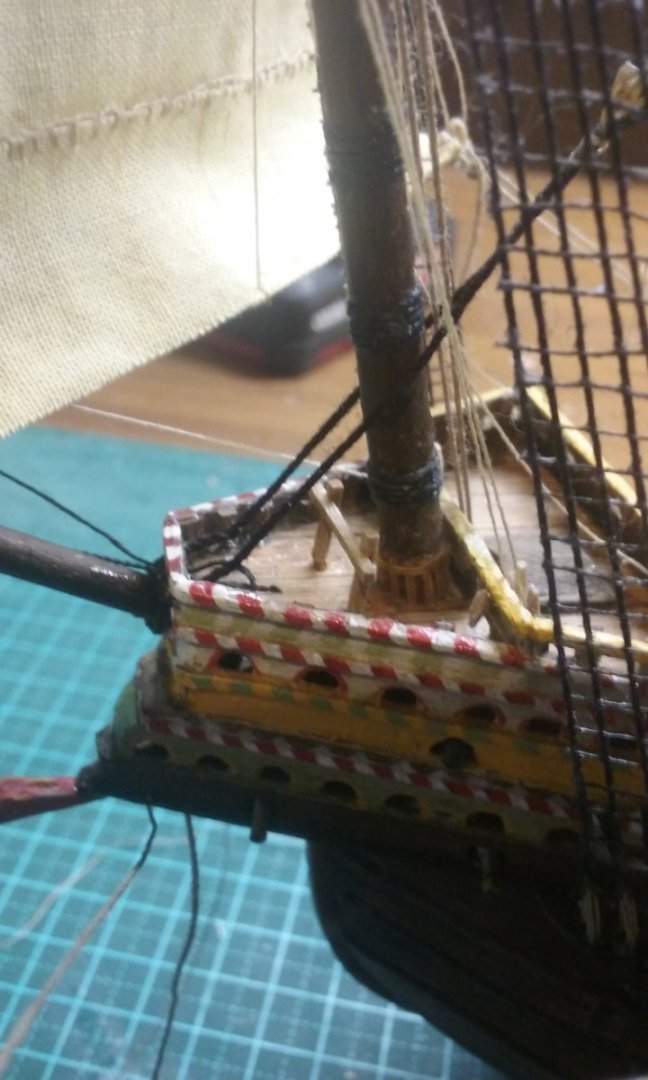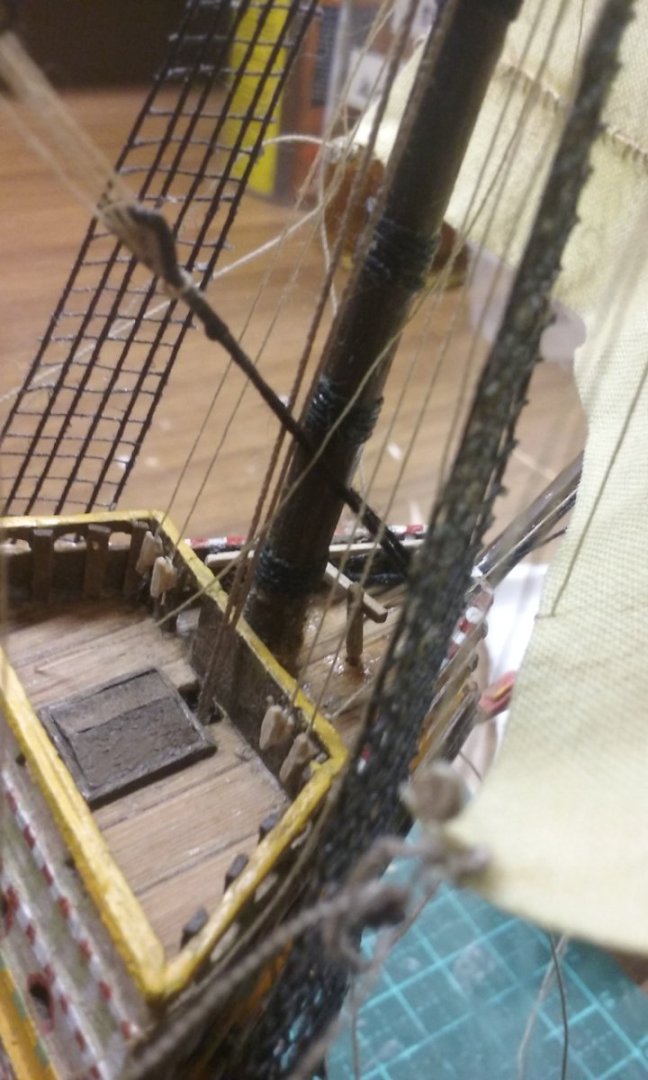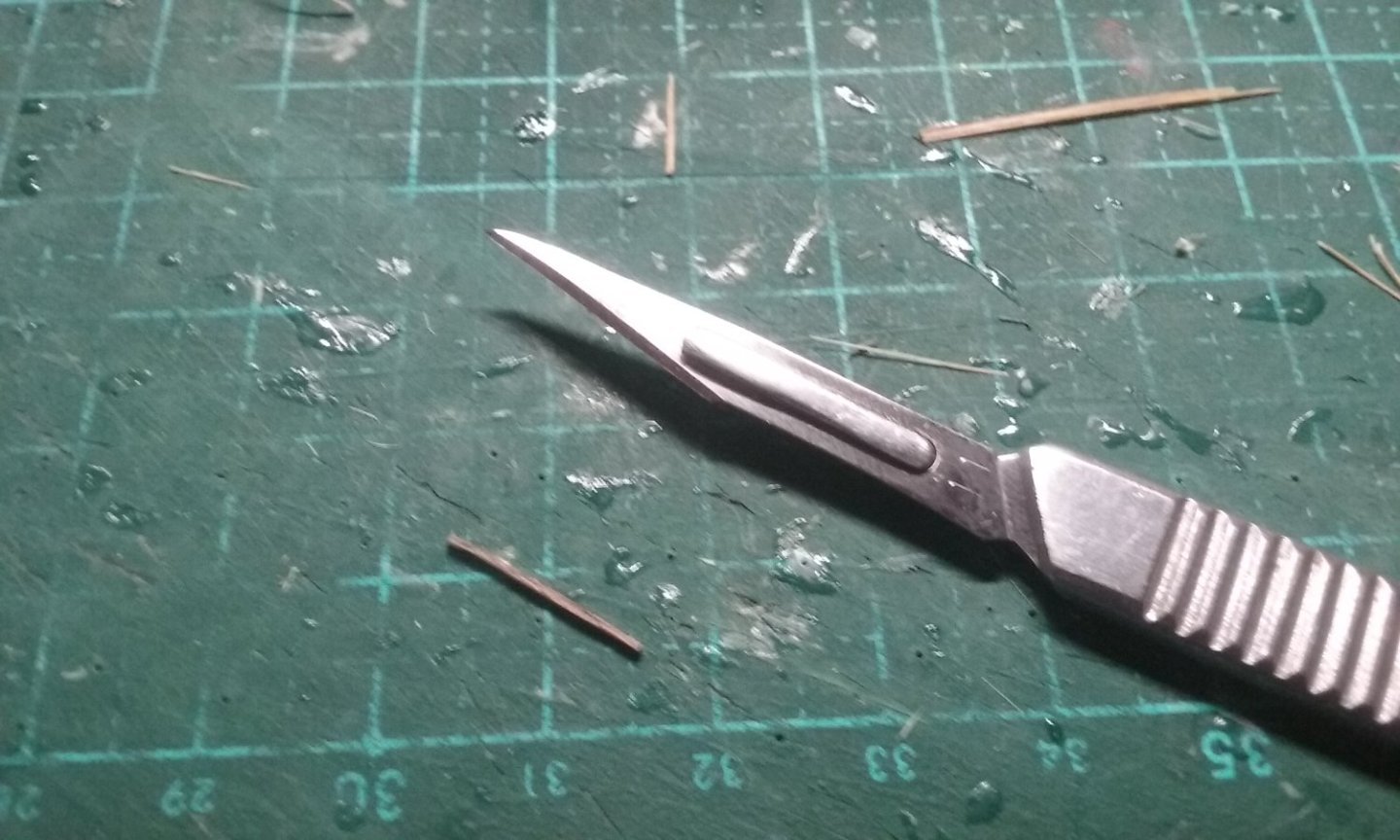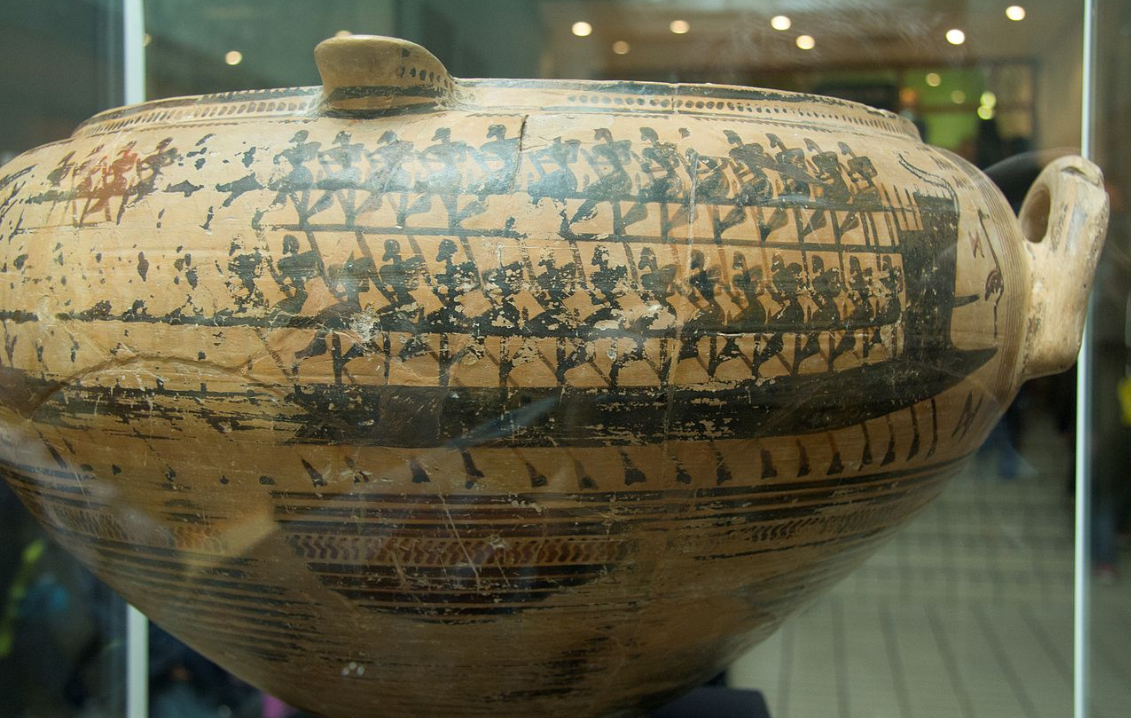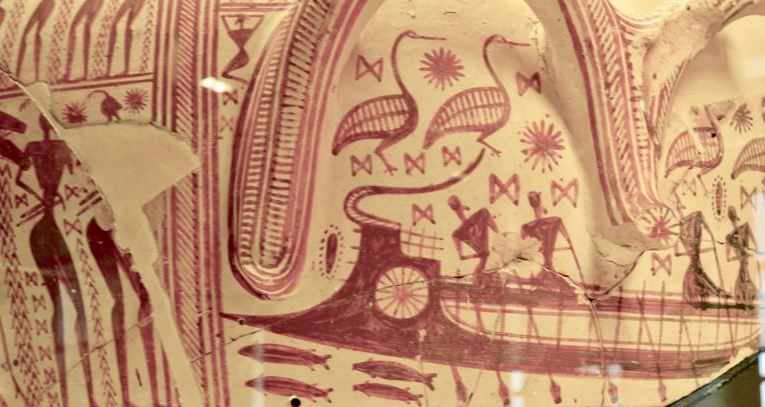-
Posts
7,985 -
Joined
-
Last visited
Content Type
Profiles
Forums
Gallery
Events
Everything posted by Louie da fly
-
HMAS Perth had a Supermarine Seagull (very similar to a Walrus) which was known as the Pusser's Duck (I don't know if that name was used on other ships). It was damaged by bombs in Surabaya and so was unfortunately not available for spotting during the battles of the Java Sea and Sunda Strait. Regarding the colour scheme, perhaps the aircraft museum at Point Cook in Victoria might be able to help. The Walrus they have is yellow, but they might have information on other colour schemes. Steven
- 88 replies
-
- Australia II
- Finished
-
(and 2 more)
Tagged with:
-
OK, so I've decided not to destroy the model - Not just yet, anyway (are you listening Harry?) Instead I've been working on various bit(t)s and pieces. Replacing the mainmast bitts with new ones that have built in "pins" so they won't be pulled off the deck like the foremast bitts were. And re-threading the lines from the forestays onto the new foremast bitts. One bonus - I managed to get them tighter so they were straighter. As I'd previously cut these ropes to length, I had to extend them (by gluing another bit of cotton onto them) to be able to pull them tight - you can see one of them leading aft past the edge of the forecastle, being tensioned by a couple of miniature clothes-pegs. Once the glue was dry, I cut them to length again. And I've added the fore-topgallant braces (I needed to make 8 tiny blocks - two for the pendants, 6 to run the downhauls through - one pair for each of the mainstay, main topmast stay and main topgallant stay) and down to deck level). And of course I'll have to repeat the whole exercise when I come to do the mainmast - (oh, joy.) I still need to finalise all the downhauls that were attached to the forebitts, which are still waving in the breeze at the moment. As I mentioned before, I'll be belaying most of these to the new side railings I've added, so the forces on the bitts are minimised. Heaven forbid that they pull off the deck again! Once that's all done I'll be able to move off the "repair" phase and back onto moving forward. Steven
- 740 replies
-
- Tudor
- restoration
-
(and 4 more)
Tagged with:
-
I'd second Gabek's vote for crochet thread. It comes in various thicknesses and dyes very nicely. The only problem I found with it is that unlike commercial thread for shipbuilding, there's no logical system for knowing exactly how thick the thread is. It's just a series of numbers - 10, 20, 30 etc, with (IIRC) the higher numbers being thinner. So you can't say "I'd like a thread half as thick as this one" - it just doesn't work that way. I'll be interested to know how the thread you already have performs. Just be aware that though synthetic thread lasts longer than natural, it is rather "bouncier" so it may not hang the same way. It can also be harder to get glue to adhere to. Steven
- 179 replies
-
- Second Build
- Pinta
-
(and 2 more)
Tagged with:
-
Some more videos I found very informative: https://www.youtube.com/watch?v=v6DZIvMZWzQ&t=584s https://www.youtube.com/watch?v=zlRbcTsm2rc https://www.youtube.com/watch?v=B3jU9Xz_GHE&t=237s Steven
-
This is the most amazing work. It's been quite a while since I looked at this log and the progress you've made is unbelievably good. Steven
-
Coming along nicely, mate. Make sure you sand down your second planking nice and smooth when it's complete. I was astounded at the difference sanding the planking made in my own model. Steven
- 179 replies
-
- Second Build
- Pinta
-
(and 2 more)
Tagged with:
-

Cargo ship ( possibly a cog) found in Estonia
Louie da fly replied to liteflight's topic in Nautical/Naval History
More news on the Tallin ship(s) https://news.err.ee/116222/medieval-ships-discovered-in-tallinn-are-rare-well-preserved-cogs -
Thanks everybody for the likes and supportive comments (very welcome under the current circumstances, when I've been seriously considering throwing the rotten thing against the wall and taking up croquet instead ). Snug Harbor Johnny and Druxey, unfortunately the bitts coming away was a fault on the part of my "current" self - I already knew from previous models that butt-joints are a bad idea but I wanted to keep the original bitts that I'd made back in the day and didn't think about the forces they'd be subjected to. Or if I did, I thought "she'll be right". But unfortunately though we learn from our mistakes, sometimes the lessons don't stick straight away - we have to make the same mistakes again before those lessons really sink in. Roger, you have a point. However, the Great Harry is somewhat later, and while I'm mainly working off the reconstruction picture in Landström's book The Ship, more importantly, the original representation in the Anthony Roll shows ratlines in the topgallant shrouds. And the "feathery" ratlines were mainly the fault of my own carelessness in cutting off the ends cleanly. I still haven't quite finished the foremast rigging - there are a couple of things to do on the topgallant - braces and bowlines - and I'll have to belay again the ropes that were fixed to the old bitts. (BTW, I've decided that for the mainmast I won't be re-using the original bitts - I'll be making new ones with "pins" carved into the bottom of the uprights - once bitten, twice shy). Steven
- 740 replies
-
- Tudor
- restoration
-
(and 4 more)
Tagged with:
-
It's been a while since the last update. Mostly sails and rigging for the foremast - I thought I'd be on the mainmast by now, but it's been going very slowly. Quite a lot of fiddly work, but not much dramatic to see where I've been. I had to replace the fore-topgallant shrouds - they were looking particularly tacky, the ratlines had gone "feathery" at the ends. Fore topsail braces Adding the new topgallant shrouds. I'd discovered the main topgallant had bent both forwards and sideways, so I had to remove the stay (which had gone loose), bend the topgallant mast straight with my trusty soldering iron and put in a temporary rope holding the fore and main topgallants taut so a new stay could be added. Adding blocks to the fore topsail stay for the forecourse bowlines to run through And the corresponding blocks on the bowsprit. Combined fore topsail sheets/forecourse lifts Fore topgallant stay added while temporary rope makes sure it will be taut. Forecourse bowlines in place Topgallant lifts, clewlines and sundry blocks. I've also glued the parrel truck to the mast, with a (non-historic) small wedge to hold it in place. Overall view And then - disaster! The topsail yard broke - possibly at an earlier mend. So after a lot of soul-searching I decided to cut away the robands and fish the yard (shouldn't be all that obvious when it's fixed. Fish being cut to shape: Yard glued back together And fish glued in place Robands replaced, along with the blocks for the sheet and brace. And then another disaster - the bitts which were just end-glued to the deck, lifted off under the force of all the lines that were belayed to it. I tried gluing it back on with a sort of spacer (made of balsa) to hold it in place: No good at all. Just messed up the foredeck and the bitts came loose again immediately. I decided I had no option but to remove all the ropes that were belayed to the bitts and make a new set, this time with "pins" carved into the ends, to fit into holes in the deck. All very well, but there was no way I could get a drill into that confined space. I ended up drilling them by hand with the pointy end of a fine file, and an awl. VERY fiddly and time consuming. Unfortunately I did't take photos of the new bitts and the holes in the deck, but here they are glued in place. I'm just hoping they'll stay this time. But this time I've added a new couple of side-rails that will take quite a few of the ropes that were belayed to the previous bitts. That should reduce the force on the join with the deck. Unfortunately there's a bit of shine from the (CA) glue, which I can't do much about. Steven
- 740 replies
-
- Tudor
- restoration
-
(and 4 more)
Tagged with:
-
It's been a while since I've looked at this log. You're really powering ahead! Steven
- 63 replies
-
- Finished
- Khufus Solar Boat
-
(and 1 more)
Tagged with:
-
Beautiful work, Patrick. I'm just struggling through this step with my own model - so many ropes! Steven
- 756 replies
-
- galleon
- golden hind
-
(and 2 more)
Tagged with:
-

HMCSS Victoria 1855 by BANYAN - 1:72
Louie da fly replied to BANYAN's topic in - Build logs for subjects built 1851 - 1900
I've been following this discussion with interest but without feeling sufficiently qualified to make any suggestions. I'm glad you've come up with a solution you're happy with, and that doesn't require pulling everything apart and starting again. Steven- 993 replies
-
- gun dispatch vessel
- victoria
-
(and 2 more)
Tagged with:
-

Mediaeval Shipwreck found in England
Louie da fly replied to Louie da fly's topic in Nautical/Naval History
Yes, but don't hold your breath. It usually takes years before the archaeological report is completed . . . Steven -

Mediaeval Shipwreck found in England
Louie da fly replied to Louie da fly's topic in Nautical/Naval History
Couldn't agree more! Steven -
You might be interested in the build log of a Maori "Waka" (dug-out war canoe) at https://modelshipworld.com/topic/16639-waka-maori-war-canoe-by-john-allen-124-finished/#comment-516441 It references a very informative book on them which contains a discussion of techniques used by the Maoris to build these surprisingly sophisticated vessels. Steven
-
https://petapixel.com/2022/07/21/sunken-medieval-boat-is-englands-oldest-ever-shipwreck/?fbclid=IwAR2pFJTcpnptoFjyONnmp1jyHw987M5JVROV3hjW2vFHxDROGXXy6KSsCRQ Looking forward to finding out more about this one. It's been dated to 1242-1265 - a little before my Winchelsea nef. I'll be interested to see how much of the hull they have recovered, and what it tells us about British ships of this period. Steven
-
G'day, Farmer. What part of Oz are you living in? Depending on the State there are various resources available. I can't help with the kits - I do scratch builds, so I don't know what kits are best/worst. But so long as you keep at it, you should be able to get through them (keeping in mind that everybody makes mistakes, so don't get discouraged by them, and wood is a very forgiving medium - you can often fix the mistakes). And welcome to the wonderful world of ship modelling. Steven
About us
Modelshipworld - Advancing Ship Modeling through Research
SSL Secured
Your security is important for us so this Website is SSL-Secured
NRG Mailing Address
Nautical Research Guild
237 South Lincoln Street
Westmont IL, 60559-1917
Model Ship World ® and the MSW logo are Registered Trademarks, and belong to the Nautical Research Guild (United States Patent and Trademark Office: No. 6,929,264 & No. 6,929,274, registered Dec. 20, 2022)
Helpful Links
About the NRG
If you enjoy building ship models that are historically accurate as well as beautiful, then The Nautical Research Guild (NRG) is just right for you.
The Guild is a non-profit educational organization whose mission is to “Advance Ship Modeling Through Research”. We provide support to our members in their efforts to raise the quality of their model ships.
The Nautical Research Guild has published our world-renowned quarterly magazine, The Nautical Research Journal, since 1955. The pages of the Journal are full of articles by accomplished ship modelers who show you how they create those exquisite details on their models, and by maritime historians who show you the correct details to build. The Journal is available in both print and digital editions. Go to the NRG web site (www.thenrg.org) to download a complimentary digital copy of the Journal. The NRG also publishes plan sets, books and compilations of back issues of the Journal and the former Ships in Scale and Model Ship Builder magazines.



